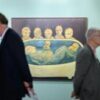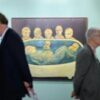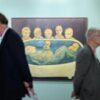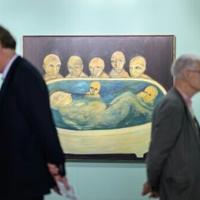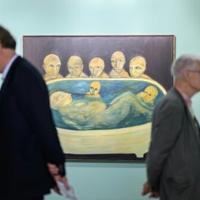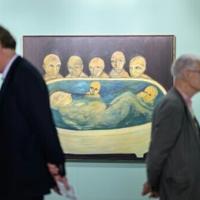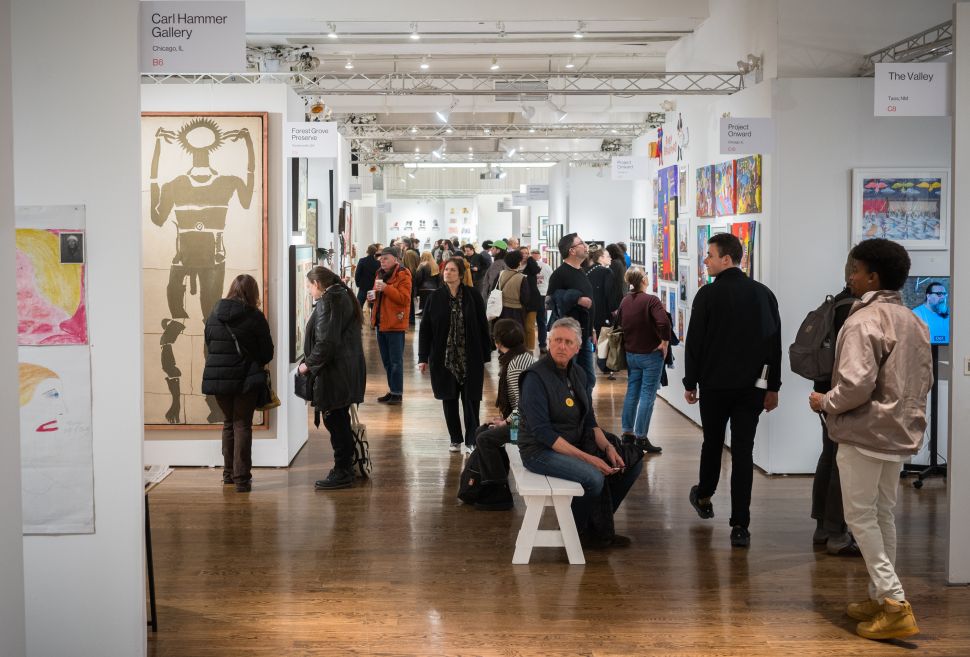
While Outsider Art has existed alongside human history since the earliest artistic expressions, it wasn’t until much later that the category was formally defined. The concept of Art Brut, coined by French artist Jean Dubuffet, emerged as a manifesto in which he described this form of art as unfiltered by societal or institutional constraints. “These artists derive everything… from their own depths, and not from the conventions of classical or fashionable art,” he wrote. Expanding on this definition in 1972, critic Roger Cardinal broadened the framework in his book Outsider Art, writing that “a paramount factor in the critical definition of the creative Outsider is that he or she should be possessed of an expressive impulse and should then externalize that impulse in an unmonitored way which defies conventional art-historical contextualization.”
Initially, the notion of Art Brut centered on work produced by those at the time seen as societal outsiders—artists suffering from mental illness, eccentrics, disabled artists and even children—fostering the misconception that this type of art was inherently linked to pathology. Over the years, however, the definition of Outsider Art has significantly expanded. Today, the term encompasses all forms of art driven by raw, unfiltered expressiveness and created by self-taught individuals who operate independently from traditional academic institutions and the mainstream art world.
As the scope of Outsider Art has evolved, so too has its institutional and market recognition. Once relegated to the margins, outsider artists are now featured in major museum exhibitions, biennales and blue-chip galleries. Consider Bill Traylor, a farm laborer turned shoemaker and factory worker from southern Alabama, whose work is now represented by David Zwirner, commanding at least five-digit prices. Similarly, Thornton Dial—long categorized as a folk or outsider artist for his paradoxical material assemblages—has seen his work reach six-digit figures at recent auctions and is now exhibited by Hauser & Wirth.
The Outsider Art Fair has been a key player in the revival and legitimization of this category and instrumental in shaping the discourse around Outsider Art since its founding in 1993. More than just a leading trade show, the fair has established a critical canon, elevated significant figures in the field and fostered ongoing discussions about the genre’s definition and curatorial framework. With the 33rd edition approaching, Observer spoke with Andrew Edlin, the fair’s director and the founder of Andrew Edlin Gallery, one of the most respected galleries specializing in this field.
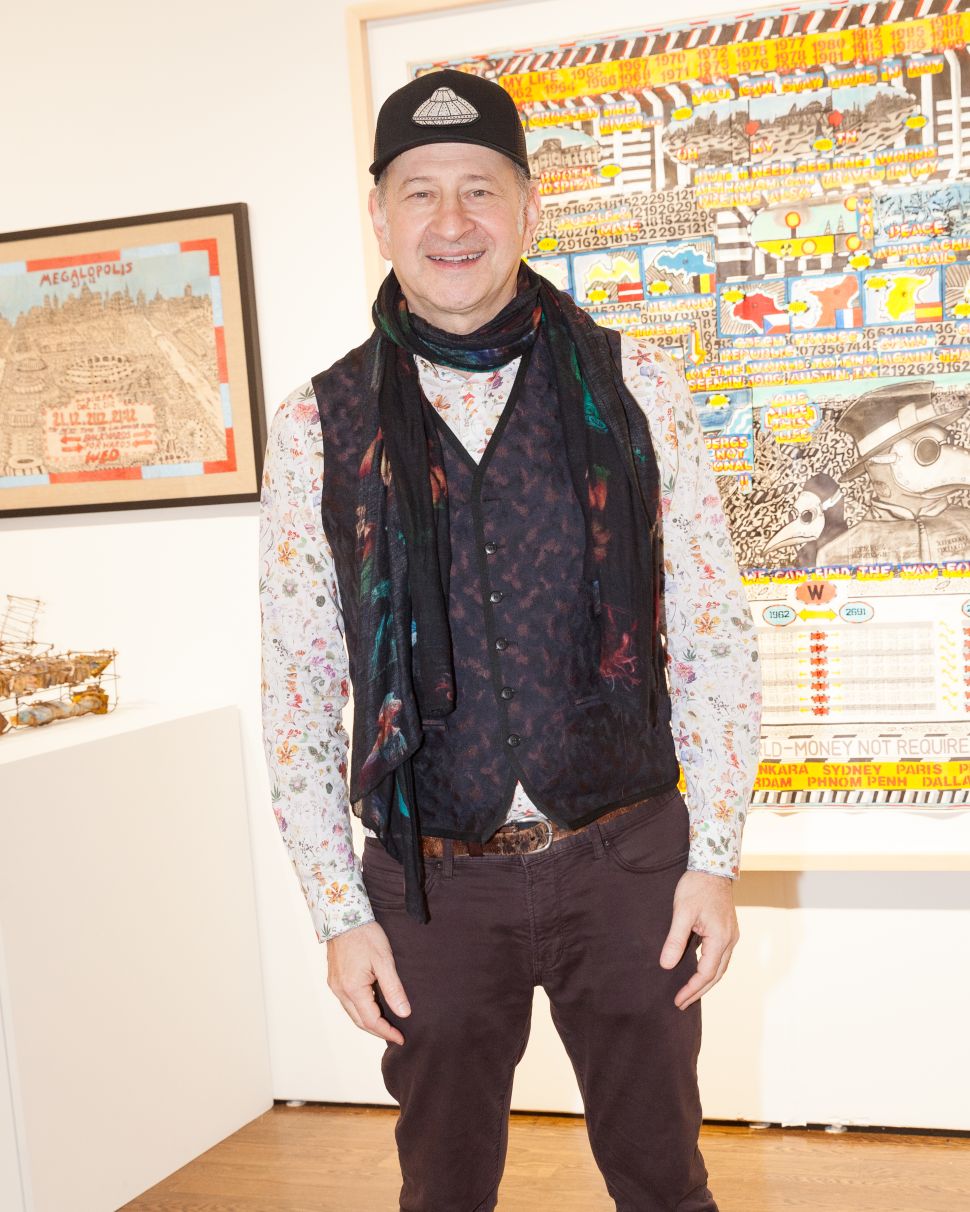
Edlin began exhibiting at the Outsider Art Fair with his gallery in the early 2000s, but after some years, he found the fair becoming too eclectic and disorganized, with a questionable selection of exhibitors that threatened the event’s overall quality and reputation. He didn’t quit the fair, however. Instead, he decided to try to help founder Sanford L. Smith, in his 70s at the time, make it a little more dynamic. “I instituted a panel discussion and tried to encourage some dealers on the fence to do the fair,” Edlin says. In 2012, he went all-in and bought the fair from Smith. “We reached an agreement at the end of the summer, and the fair was scheduled for the following January, so I had to scramble to make it happen. But my first year was a huge hit: we tripled the attendance, and the press was over the moon.”
With his takeover, Edlin made it a priority to establish higher standards—not just in terms of the quality of the work presented but also in how it was displayed. “It was a little too much top-to-bottom display, like a flea market,” he recalls. “I offered some guidelines, and we instituted a vetting committee.” Throughout our conversation, Edlin repeatedly emphasized that curatorial quality and the frameworks in which outsider art is presented are crucial to fostering its appreciation and elevating it alongside other artistic expressions. He believes that curation—and the way the art is contextualized—was essential to legitimizing the artists he championed within the contemporary art world. “A real hallmark of my career was taking this self-taught material and presenting it and treating it with sort of professionalized contemporary art world standard for presentation, for care and in my gallery. Not so far into my career, I began curating to place outsider and contemporary artists together.”
Yet, Edlin acknowledges that the Outsider Art community was initially resistant to his approach. Many within the field viewed the broader art world as overly manipulative and instrumentalizing and were wary of integration. The key to securing wider institutional and collector interest, he explains, was creating a direct dialogue between Art Brut and contemporary art. “I’m still virtually the only Outsider Art dealer doing the contemporary fairs, but I also show other artists,” he says. “Since the beginning, I believed that treating outsider artists with a certain level of distinction and dignity in the way they were framed and presented and pairing them with other works by trained artists was part of a strategy to gain wider acceptance and recognition for outsider art in the mainstream art world audience.” These conversations between outsider and contemporary artists not only create new contexts for appreciation but also highlight the ways in which self-taught artists have long inspired their trained counterparts. “Self-taught artists and outside artists are incredibly influential on trained artists.”
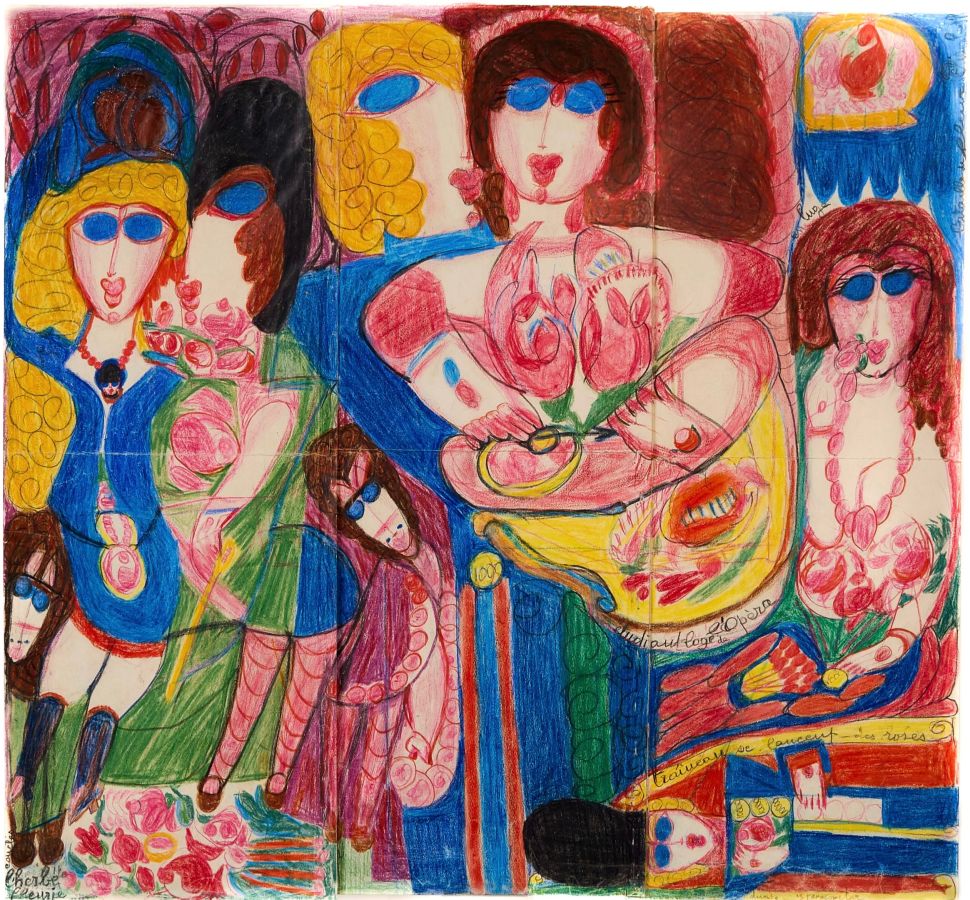



A series of seminal museum exhibitions have played a crucial role in deepening the exploration of Outsider Art’s relationship with mainstream art and solidifying its place within broader art history. The 1992 exhibition “Parallel Visions: Modern Artists and Outsider Art” at LACMA demonstrated the profound influence Outsider artists have had on the mainstream since the early 20th century, a theme that was revisited and expanded upon in “Outliers and American Vanguard Art” at the National Gallery of Art in Washington, D.C. (2018–19). However, one of the most pivotal moments for Outsider Art’s institutional recognition was undoubtedly the 55th Venice Biennale in 2013, curated by Massimiliano Gioni. “The Encyclopedic Palace” took its title from the utopian vision of Italian-American Outsider artist Marino Auriti, who conceived an architectural model for a museum that could house all of the world’s knowledge.
Other institutions have embraced Outsider Art with significant acquisitions, solo exhibitions, and hybrid shows that integrate it within broader curatorial narratives exploring worldviews across time. Outsider artists have also been increasingly present in recent editions of the Venice Biennale, reflecting the art world’s growing interest in what are often framed as more “genuine” forms of artistic expression—whether emerging from Indigenous communities or rediscovered visionary artists who had been previously overlooked.
As the definition of Outsider Art, and of art itself, becomes increasingly fluid, the challenge is not only determining what qualifies as Outsider Art but also questioning whether this distinction still holds relevance. Should we continue drawing these lines, or should we fully embrace a transcultural and deeply universal understanding of art as a timeless, shared human need for symbolic expression—one that inherently transcends rigid categorizations? We asked Edlin how he defines Outsider Art.
“For me, what distinguishes Outsider Art is that it’s not based on other art historical references—it’s independent of both the academic and historical tradition and the mainstream art system,” he says. “It’s a much more hermetic, individualistic tradition. Most of the artists presented at the Outsider Art Fair, even the most famous ones, their works came to the public eye only through a third party. Most of the time, these figures were not even self-identifying as artists, and, maybe more importantly, they were not making the work to show it, so the audience was almost irrelevant.”
This radical independence from the system and the resulting unfiltered personal expression are what make Outsider Art so uniquely visionary. Many of these artists’ works carry an almost divinatory quality, revealing the workings of the subconscious and tapping into timeless archetypes that resurface across cultures and eras.
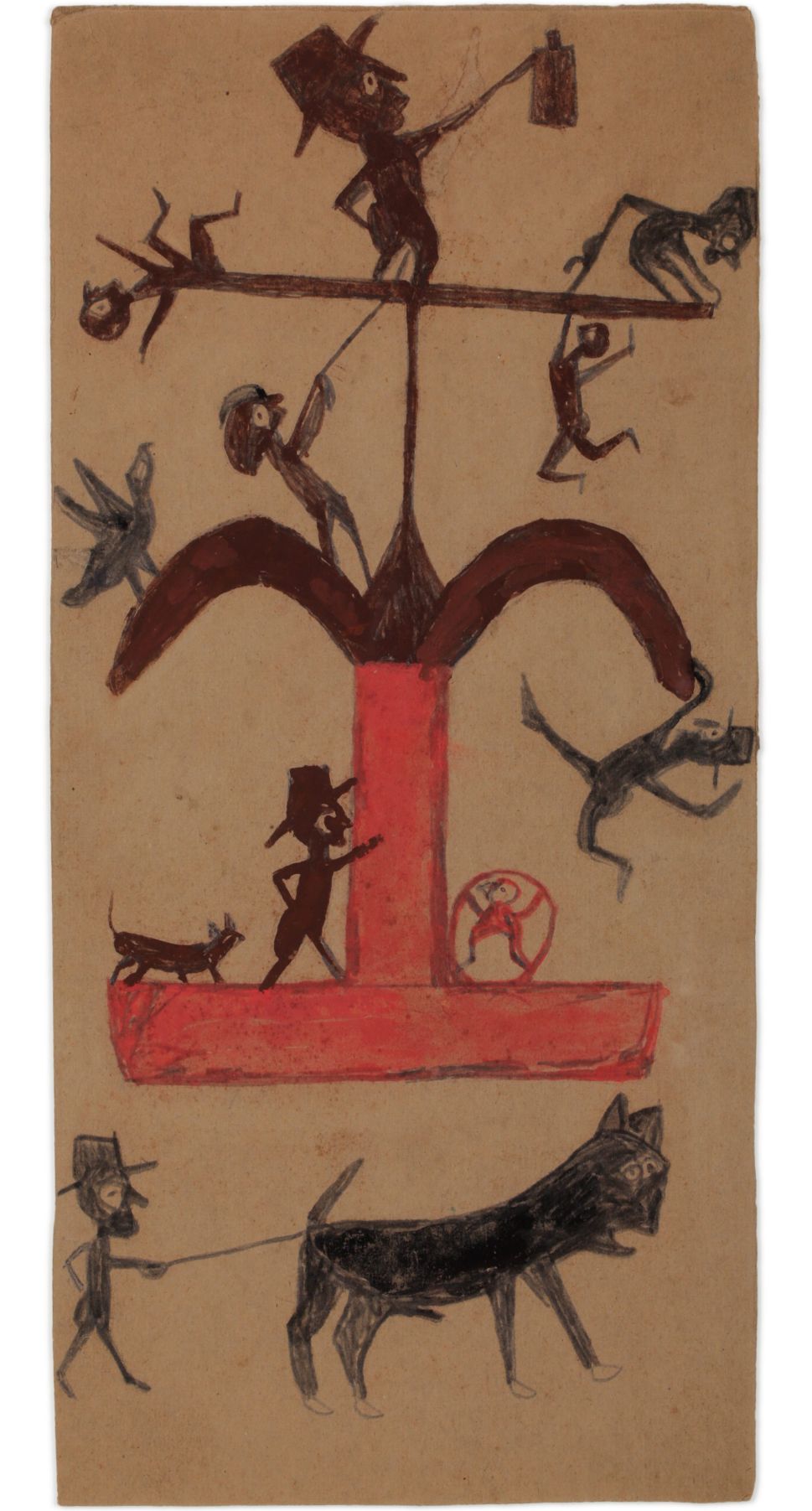



Commenting on the increasing presence of Outsider artists in major galleries, Edlin notes that the blue-chip art world is merely catching up—belatedly—after an entire community has already done the work of securing and nurturing these artists’ cultural and, eventually, commercial value. “Only after a generation of dealers and a community like the Outsider Art Fair created a market for it did they decide to show those artists,” he says. “Fifteen galleries in the Outsider Art Fair might have done solo shows with that artist for the last thirty years. It might have been in at least two or three booths yearly at the Outsider Art Fair before landing at that mega gallery. However, anything that expands the recognition and the audience for the work, I’m 100 percent for it.”
For Edlin, the Outsider Art Fair plays a crucial role in this process, functioning as a platform that fosters knowledge, awareness and appreciation for these artists. The fair’s website has a section dedicated to the history of Outsider Art, along with a database highlighting some of its most significant figures—part of an ongoing parallel narrative that has always intersected with, yet remained distinct from, the “official” trajectory of art history.
SEE ALSO: From Eden to Eternity – An Unintended Conversation On Blackness and Identity
That history is far from static. Edlin acknowledges that an entire generation of dealers paved the way before him and notes that a wave of new galleries, both fully and partially dedicated to Outsider Art, is emerging. Yet, as we discuss the hypermediated contemporary world in which we live—where even young children are inundated with visual messaging and artistic influence—the question arises: can we still discover and define an emerging artist as an outsider, even if they are self-taught, if they are inevitably shaped by pervasive visual culture? Edlin believes the answer is yes, though he acknowledges the complexity of such distinctions. “They’re gray areas; these are not always black-and-white situations. A lot of these artists have been discovered posthumously.” He points to the recent enthusiasm for the miniature crime scene tableaus by Abigail Goldman, an artist who works in a prosecutor’s office in a small town in Washington State. While her profession informs her artistic practice, she has never formally studied art and does not necessarily identify as an artist. “The key factor is that they’re not tied together or informed by specific art historical references.”
For Edlin, the Outsider Art Fair is more than just a commercial event—it is, above all, a community built on passion, a network of people deeply committed to championing these artists and advancing their recognition. More importantly, the experience it offers is fundamentally different from that of other major art fairs. It preserves space for meaningful conversations and unexpected discoveries. “It’s about this wonder and amazement, the possibility to discover art with your eyes and not your ears, and just to see something that you never saw before.”
The 2025 edition of the Outsider Art Fair puts a global filter on outsider expression.
This year’s Outsider Art Fair will feature sixty-six exhibitors from forty cities across nine countries. Visitors will have the opportunity to see works by living outsider artists such as Noviadi Angkasapura, JJ Cromer, Shuvinai Ashoona, M’onma, Julian Martin and Margot, among others, alongside acknowledged outsider masters like Henry Darger, William Edmondson, Augustin Lesage, Judith Scott and Bill Traylor. Also featured is Aloïse Corbaz, the Swiss outsider artist originally included in Jean Dubuffet’s foundational collection of psychiatric art and one of the few acclaimed female outsider artists, whose work was recently spotlighted in the Venice Biennale.
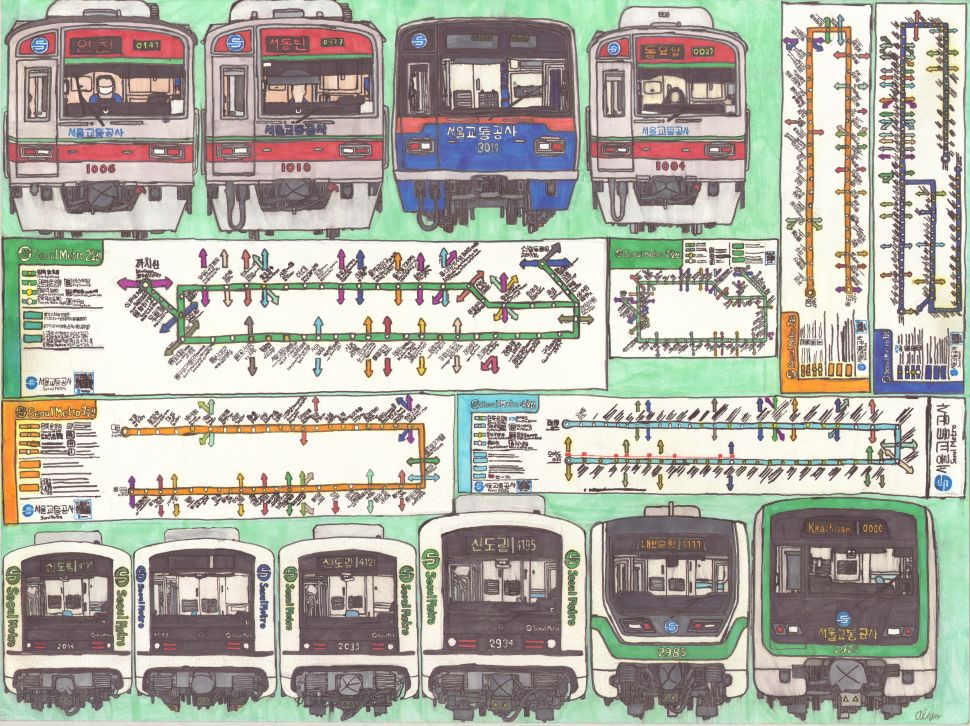



Notably, this year, the fair’s Curated section, “Follow My Moves,” will showcase an exhibition of Brazilian self-taught art curated by São Paulo-based curator, writer and postdoctoral researcher Mateus Nunes. Aligning with the growing focus on alternative artistic forms and narratives from the Global South, as seen in the latest Venice Biennale, the presentation will highlight a range of works by self-taught Brazilian masters, including Amadeo Luciano Lorenzato, Chico da Silva, Conceição dos Bugres and MariaLira Marques. Through their art, these artists convey visual and oral histories, ancestral wisdom and spontaneous spirituality rooted in Indigenous communities and the African diaspora, spanning from the 1950s to today.
Among the fair’s other highlights will be works from two of the most prestigious collections of Outsider Art—many resurfacing on the market for the first time in decades, following early and forward-thinking acquisitions by visionaries. Ricco/Maresca Gallery (New York) will showcase masterpieces of Outsider, self-taught and Art Brut from the collection built over forty years by advertising industry pioneer Robert M. Greenberg, with standout works by Henry Darger, Bill Traylor and Adolf Wölfli, among others. Fleisher/Ollman (Philadelphia) will present selections from the collection of Audrey Heckler, a longtime board member and donor to the American Folk Art Museum, who passed away last year in her 80s after more than three decades of collecting Outsider Art. “It’s an exciting occasion for collectors, but also an opportunity to see some of the best works of Outsider Art, as these collectors acquired the best examples very early on from artists who are now among the most renowned today,” says Edlin. “These forefather collectors had the first pick.”
Outsider Art Fair 2025 takes place from February 27 to March 2, 2025, at the Metropolitan Pavilion in New York.
This post was originally published on this site be sure to check out more of their content

